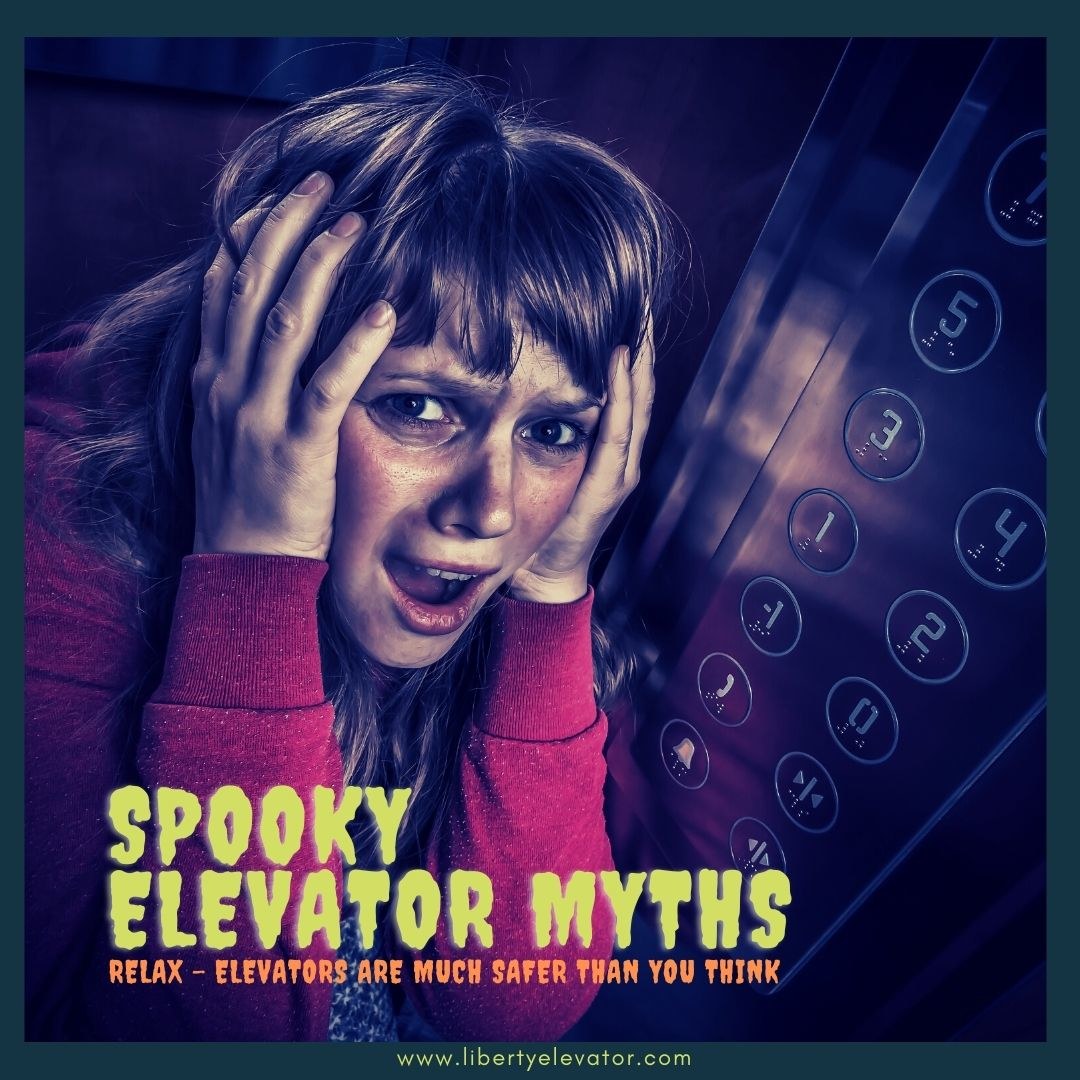Relax- Elevators Are Safer Than You Think
Elevators are one of the most common forms of transportation in the world, but they are also shrouded in myth and misconception. From the fear of getting stuck to the belief that you can fall to the bottom of the shaft if a cable breaks, there are many myths about elevators that can cause people to feel anxious about using them.
In this blog post, we will debunk some of the most common elevator myths and explain why they are not true. We will also provide some tips on how to stay safe when using elevators.
Scary Elevator Scenes in the Movies
Elevators have played a big role in many action scenes and horror movies, whether it’s a villain trapping a hero in an elevator or a cab in a skyscraper plummeting thirty stories. The idea of elevator catastrophe is one that is implanted in our collective consciousness as something to fear. However, here are some things you might not know about elevator safety mechanisms which have been implemented specifically to prevent the tragedies we fear most.
Elevator Cable Failure
Many gripping movie scenes depict an elevator suspended by a single cable, which frays & snaps, dropping the cab with all inside.
Reality: Any elevator using cables and a motor to work has multiple cables holding it up. Additionally, the likelihood of a cable snapping is slim. Modern cables are engineered to hold twelve times the weight of the elevator when it’s full of passengers. If you’re worried about overloading the elevator, don’t be: most elevators won’t close their doors or move if the weight limit is exceeded.
Elevator Free Fall
Not all elevators rely on cables to function. One common misconception is that the elevator can plummet several floors or down the whole shaft.
Reality: All modern elevators are equipped with speed governors. When the elevator exceeds a certain speed, an emergency brake kicks in to stop its movement. Even if a loss of power were to occur, the elevator would make a controlled stop, not fall to the bottom of the shaft.
Falling Down an Empyt Shaft
There is a fear that when the hall doors open to get into the elevator, you might fall down the empty shaft.
Reality: Elevators are designed so that the car controls the opening of the doors. If the car is not at the landing, it will not trigger the doors to open. This is another safety feature that is designed to prevent people from stepping into an empty elevator shaft
No Thirteenth Floor
Based on recent polling, estimates are that 85% of US buildings with elevators do not have a designated 13th floor. Why? Some explanations have suggested that government buildings have private access to top-secret departments on the 13th floor, or hotels have an unlucky floor where guests have met an untimley demise, the floor is haunted or something even more sinister is going on.
Reality: For many people, the number 13 is considered unlucky and building owners will sometimes purposefully omit a floor numbered 13. Even building owners who are not themselves superstitious realize that the desirability of units on the 13th floor might be compromised because of superstitious tenants, or commercial tenants who worry about losing superstitious customers.
Suffocation in an Elevator
People worry that if an elevator cab is trapped between floors, those inside will have a limited oxygen supply and suffocate if trapped too long.
Reality: You may not know that elevators are specifically designed not to be airtight. There’s a minimum requirement that an elevator cab’s floor space must be at least 2% vents, and many elevators are also air conditioned or heated, meaning anyone inside has a constant supply of air.
Trapped in the Elevator Doors
One of the biggest fears shared by the public is getting crushed by the elevator doors when they close or being caught when the elevator starts to move between floors.
Reality: All modern elevators are required to have several fail-safe mechanisms in place to prevent elevator doors from closing while people enter and exit the cab. Most elevators have an infrared curtain across the entryway completing a digital circuit, informing the elevator controller not to activate unless the circuit is complete. This also locks the elevator from moving between floors while the doors are open. As of January 1st, 2020, a certified DLM (Door Lock Monitoring) systems is required by law on all elevators in NYC to further reduce the chance of an elevator moving before the elevator doors completely close.
Jump Up & Down in a Stuck Elevator
If you get stuck in an elevator, you should jump up and down to try to dislodge it.
Reality: This is a dangerous myth that should be avoided at all costs. Jumping up and down in an elevator can actually cause the car to become more unbalanced and make it more difficult to get out. If you get stuck in an elevator, the best thing to do is to stay calm and press the emergency button.
Elevators are Dangerous and Unreliable
As you can see, there are several myths pertaining to the safety and reliability of elevators, but are theses fears based in fact or fiction?
Reality: Elevators are one of the safest forms of transportation in the world. In fact, you are more likely to be injured in a car accident than you are to be injured in an elevator accident. Elevators are subject to strict safety regulations and are regularly inspected to ensure that they are safe to use.
Tips For Staying Safe When Using Elevators
The truth is, elevators are very safe and reliable machines. They are inspected regularly and have a variety of safety features in place to prevent accidents. If you are ever concerned about using an elevator, you can always ask a building attendant for assistance.
- Always face the elevator doors when entering and exiting the car.
- Be careful not to overload the elevator.
- Keep your hands and feet away from the doors while the elevator is moving.
- If you get stuck in an elevator, stay calm and press the emergency button.
Elevators are a safe and efficient way to get around tall buildings. By understanding the common myths and misconceptions about elevators, you can feel more confident using them. If you have any concerns about using an elevator, do not hesitate to ask for assistance.
Liberty Elevator Debunks Your Elevator Fears
Although a neglected elevator can still be very dangerous, Liberty Elevator Corporation is here to help ease your fears, as well as educate you on how the frequency of these dangers has been greatly reduced with standardized safety regulations & modern technology. To be sure the elevator is safe, your best course of action is to find a reliable elevator provider to inspect and maintain all of your vertical transportation equipment.
As one of the top elevator companies in New Jersey, New York, Pennsylvania and Florida, Liberty Elevator understands that our customers have unique needs and offers our clients the freedom to choose. Whether choosing a customized elevator maintenance program, installing nonproprietary equipment, or providing a flexible agreement, Liberty Elevator offers knowledgeable recommendations for various models and vintages of elevator equipment.
If there is something strange in your elevator. Who you going to call?
Check out Elevator World's list of scary elevator scenes in movies: Link


